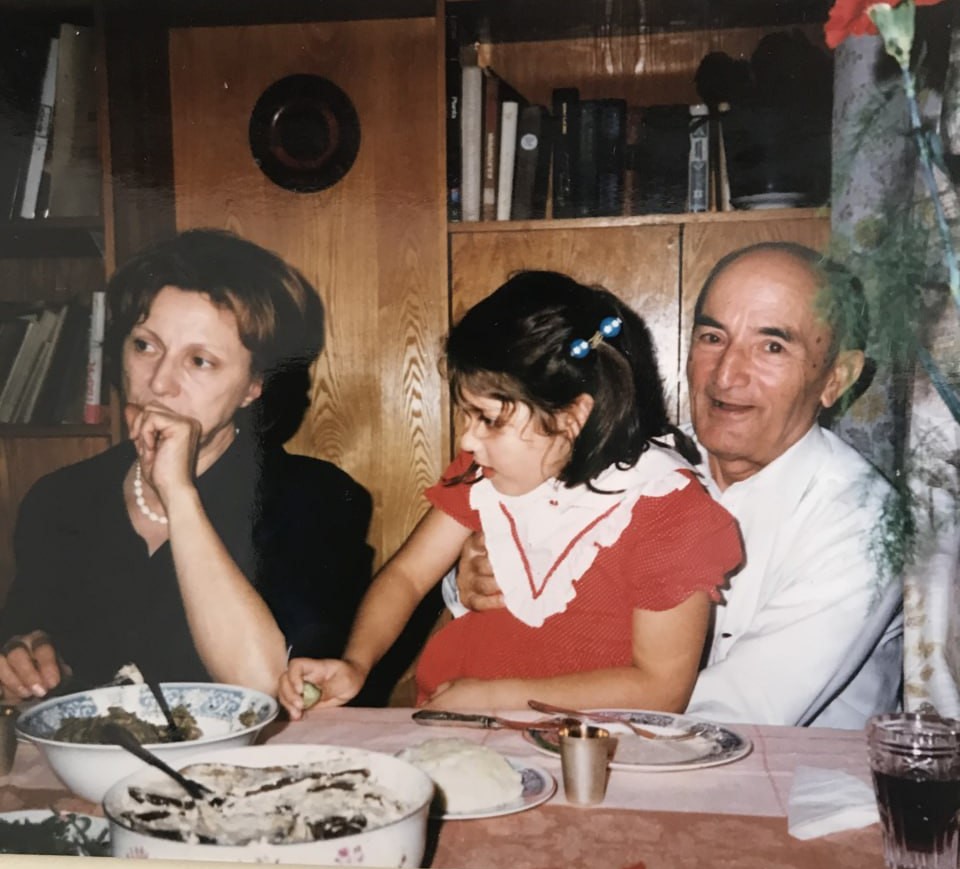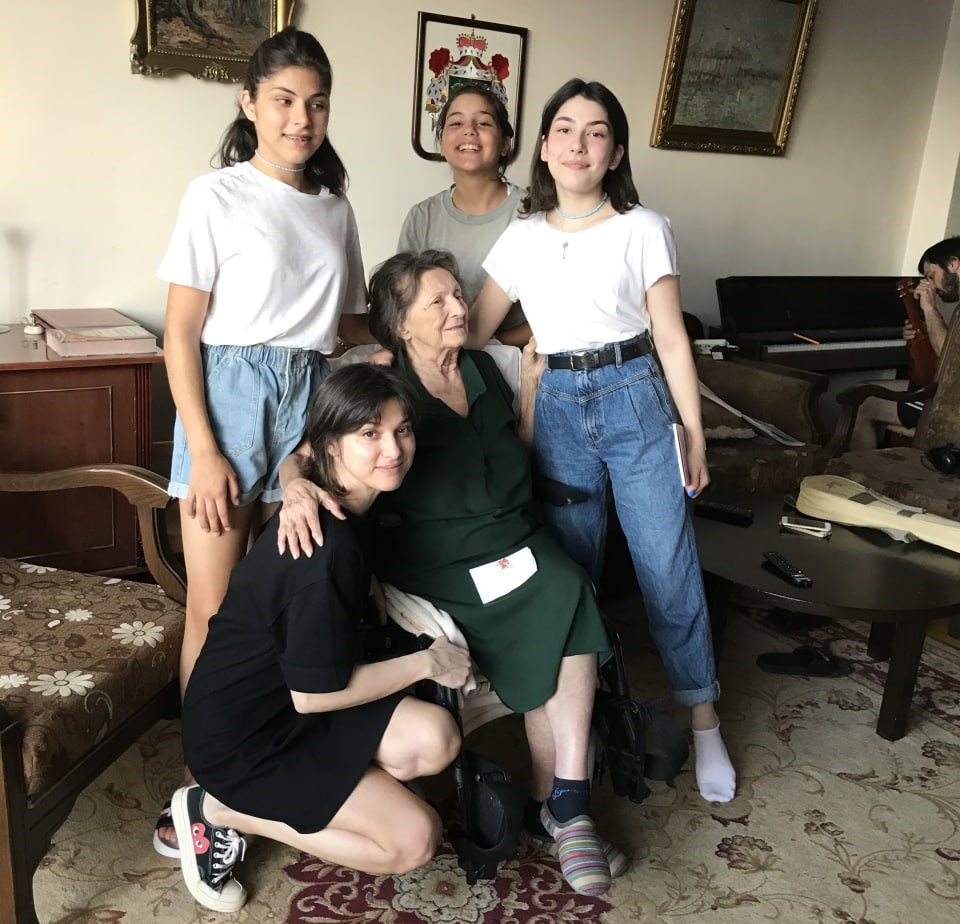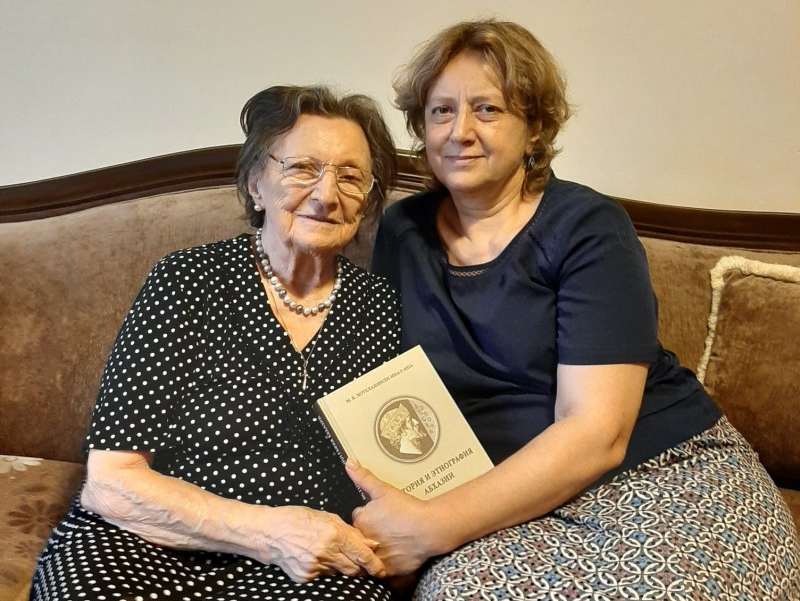Celebrating the 95th Birthday of Esteemed Scholar Mirra Konstantinovna Khotilashvili-Inal-Ipa

Mirra Konstantinovna Khotilashvili-Inal-Ipa, historian, archaeologist, and honorary doctor of the Abkhazian National Academy.
SUKHUM / AQW'A ― Today, the 5th of December, we celebrate the birthday of Mirra Konstantinovna Khotilashvili-Inal-ipa, a distinguished historian, archaeologist, and honoured cultural worker of Abkhazia, as well as an honorary doctor of the Abkhazian National Academy. This year marks her 95th birthday.
Born in 1928 in Tbilisi, she graduated from the subtropical department of the Tbilisi Georgian Institute of Agriculture in 1951. Upon graduation, she was assigned to work in the rural administration of the Gulrypsh district executive committee.
In Abkhazia, she met Shalva D. Inal-ipa (1916-1995), a research fellow at the Abkhazian Research Institute of Language, Literature, and History. They united their destinies in January 1952. Shalva Inal-ipa instilled in her a deep interest in the history, ethnography, and archaeology of Abkhazia.

Mirra Khotilashvili-Inal-ipa and Shalva-Inal-ipa
From the late 1950s, Mirra Konstantinovna actively participated in several archaeological expeditions. In the following years, she dedicated herself entirely to the history and archaeology of Abkhazia. In 1974, she obtained a second degree, graduating from the history department of the Sukhum Pedagogical Institute named after Alexei Maxim Gorky. Throughout the 60s and 70s, she participated in scientific expeditions led by archaeologists like Lev Solovyov, Georgy Shamba, and Mikhail Gumba, working at sites like the Cold Grotto (Khupynipshahua in Abkhaz), in Eshera, and at the Sukhum Fortress.
From 1960 to 1968, she worked as a research fellow in the department of funds at the Abkhazian State Museum, and from 1968 to 1971, in the department of archaeology at the Abkhazian Research Institute of Language, Literature, and History. In 1971, she was transferred to the Abkhazian State Museum as the chief curator.
Since 1972, she has been a senior research fellow in the department of funds. From 1977, she led the archaeological exposition department, comprising five halls.
Since 2015, she has been the chief scientific consultant of the State Museum.
Over the years, Mirra Inal-ipa has conducted extensive work in the museum, documenting and systematising various archaeological collections, inventorying numismatic material (6,500 items), and managing items made from precious metals. She initiated four special safe inventory books for gold coins, items made of pure gold, items containing gold, and items made of pure silver.
For decades, she has been an indispensable consultant in numismatics, archaeology, and the history of Abkhazia for young Abkhazian researchers and visiting foreign scientists. The first comprehensive exhibition of mediaeval Abkhazian history was prepared based on Mirra Inal-ipa's sketches (1972).
Batal Kobakhiya, a renowned archaeologist, public figure, and Hero of Abkhazia, spoke to an Apsnypress correspondent about his acquaintance with Mirra Konstantinovna Khotilashvili-Inal-ipa, her contributions to historical science, and his friendship with the Inal-ipa family. Read here...

During the Georgian-Abkhazian war of 1992-1993, Mirra Inal-ipa, along with museum director Alexander Tariya and other staff members, made significant efforts to save the museum and its invaluable exhibits and collections from looting.
After the end of the Patriotic War of the People of Abkhazia in 1992-1993, despite the tragedy of losing their son, Adgur Inal-ipa (1952-1993), a talented physicist, she and Shalva Inal-ipa continued their scientific work.
Mirra Konstantinovna supported her husband. In the last two years of his life, Shalva Inal-ipa worked intensively, revising and preparing for re-publication several books, primarily "Questions of Ethnocultural History of the Abkhazians," which included many new materials. Under a contract with the Adyghe Institute of Humanitarian Studies, he was preparing the publication of the fundamental work "Anthroponomy of the Abkhazians" and a study of Prince Inal.

Mirra Khotilashvili-Inal-ipa and her daughter Arda Inal-ipa.
"These works would not have been republished or newly published if not for Mirra Inal-ipaa. She prepared the books for publication, proofread them. Her effort was colossal; clarifying all references, footnotes, correcting deficiencies, and getting these books ready for print," recounted Arda Inal-ipa, the daughter of the scientists, to Apsnypress.
Mirra Khotilashvili-Inal-ipa is the author of over 50 scientific works on the archaeology, history, art history, numismatics, and ethnography of Abkhazia.
Her book "A Reader in the History of Abkhazia," published in 2010 in Abkhaz language, has been an important resource for history teachers in Abkhazian schools. In 2020, the book was updated and republished.
"The book, modestly titled by the author as 'A Reader in the History of Abkhazia,' stands out for its informativeness. The author has conducted extensive work in detailing and supplementing various historical positions of Abkhazia. This involved a significant amount of specialised literature, written sources, and archaeological and ethnographic data," said Valery Biguaa, corresponding editor of the book and doctor of historical sciences, to Apsnypress.
Mirra Inal-ipa has been a participant in many scientific conferences.
In 1984, she was awarded the "Veteran of Labor" medal, and in 2006, the "Akh’dz-Apsha" Order of the III degree.
In 2016, she was honoured with the title of "Honorary Doctor of the Academy of Sciences of the Republic of Abkhazia."
Publications:
"A Reader in the History of Abkhazia." Extended edition. Sukhum, 2020 (in Russian).
"History and Ethnography of Abkhazia: Collection of Articles." Sukhum, 2019.
"The Magical Dream of Damey. A Tale of the Atsanas." Sukhum, 2014 (in Russian and Abkhazian).
"A Reader in the History of Abkhazia." 2010 (in Abkhazian).
"The Organ. A Brief Historical Outline. The Pitsunda Organ." 2005, with reprints in 2006, 2007, and 2014.
This article was published by ApsnyPress and is translated from Russian.